Bartlow is one of two churches in Cambridgeshire with a round tower, the village is on the edge of a county border with Essex, so these boundaries have fluctuated over the past hundred years between Cambridgeshire and Essex. It’s listed in the Royal Commission on Historical Monuments book of Essex, 1911 and in the 2014 Pevsner guide as Cambridgeshire.
Churches with round towers are almost exclusive to East Anglia, especially Norfolk and Suffolk. The other church in Cambridgeshire with a round tower is Snailwell and that is on the border of Suffolk and likely was once part of Suffolk too. Why these churches where built with round towers is a mystery; there was once the suggestion it was to be a defence against Viking raiders, but many of the churches where built long after the age of the Vikings.

Below are two strange pieces of graveyard furniture. One is a Greek omphalos decorated in a Georgian style, and below it a rather beautiful, tall, grave marker cast in metal.
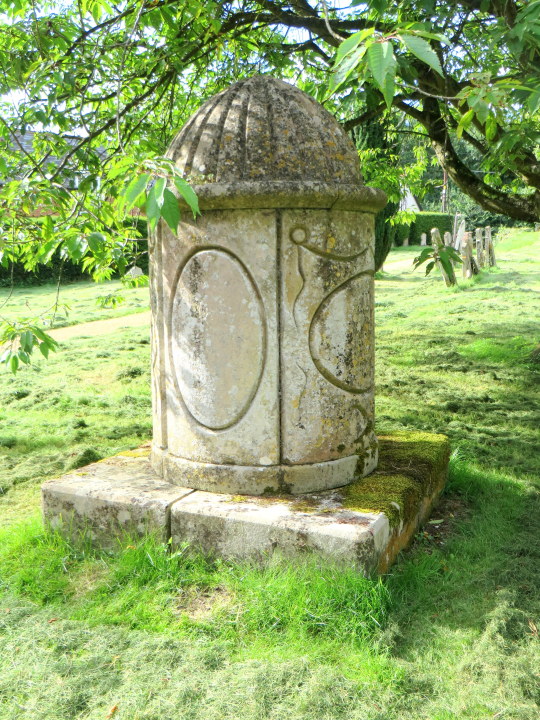


The In spite of the belief that Bartlow church was built by King Cnut near the site of the battle of Ashingdon (Assandun) in the early 11th century, no documentary references to the church have been found earlier than the 13th century, and the building dates from the late 11th or early 12th. †
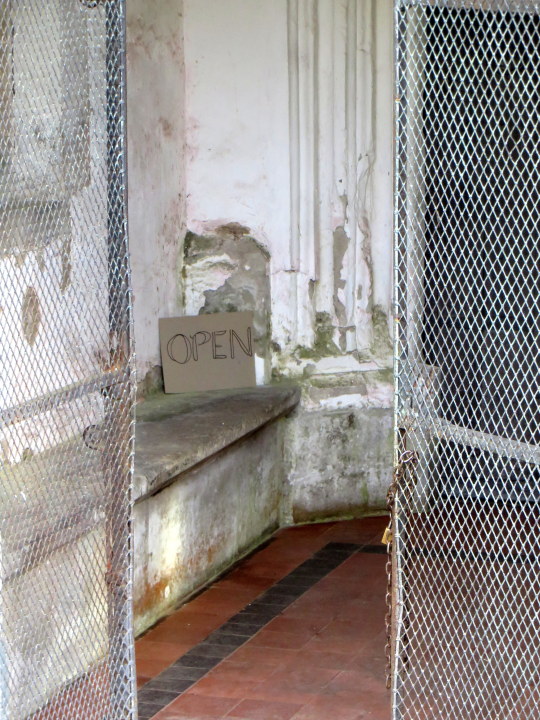
Inside the church, the stained glass windows seam to have a jumbled amount of completion.The tops of the windows however are almost all complete and feature these Lions.
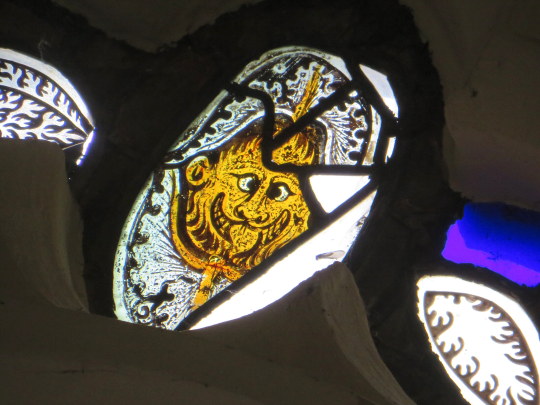
The Lions faces to me are comic and fun. I am unsure whom they are depicting. They are designed like a burning sun, but the representation is likely to be God even though it could be more abstract than that, it could be Richard I, or the reigning monarch or the country’s spirit. They are usually represented either side of a Saint or Jesus portrait.
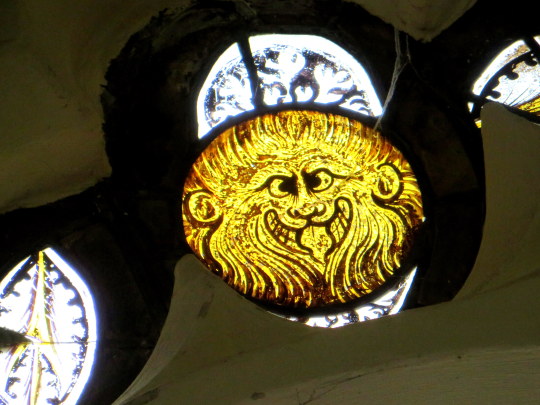
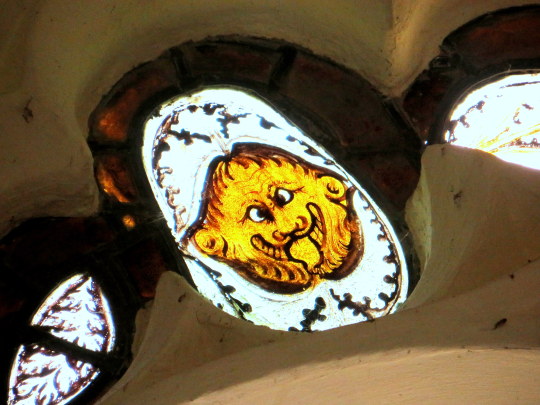
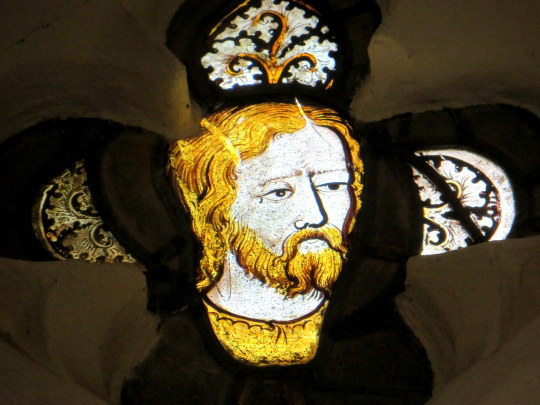
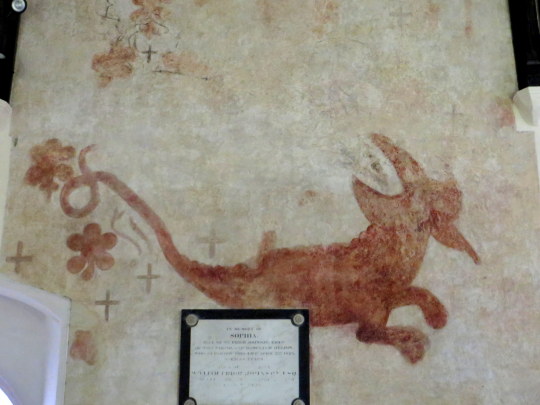
Above is the shadow of George and the Dragon, though only the base paint of the dragon remain with a few details of flowers and crosses. With the wave of puritanical iconoclasm during the sixteenth century, all the beautiful paintings and details of churches where whitewashed over. Today with luck and careful restoration these are being uncovered. Below on the opposite wall of the church is a better preserved wall painting.
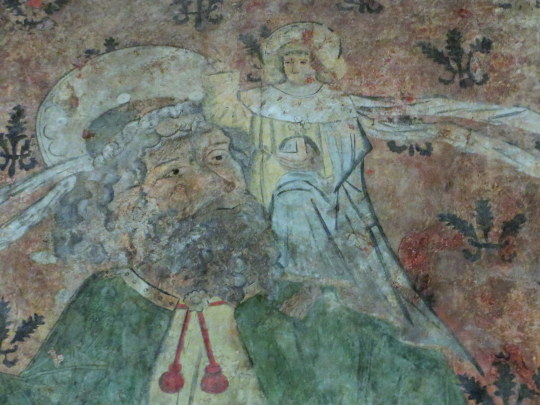
Saint Christopher Carrying the Christ Child
Saint Christopher was a man of great size and strength who devoted himself to Jesus by helping travellers cross a dangerous river. One day a child asked to ride on Christopher’s shoulders across the river, but the infant seemed to grow heavier and heavier with every step. When they arrived on the opposite shore, the child identified himself as Christ, telling the holy man that he had just carried the weight of the world. Saint Christopher became one of the most popular patron saints for travellers in the Middle Ages.

I would guess the organ is a restoration project as it is highly decorated all over, from the ornamental pipes at the front to the boxing holding the mechanism.
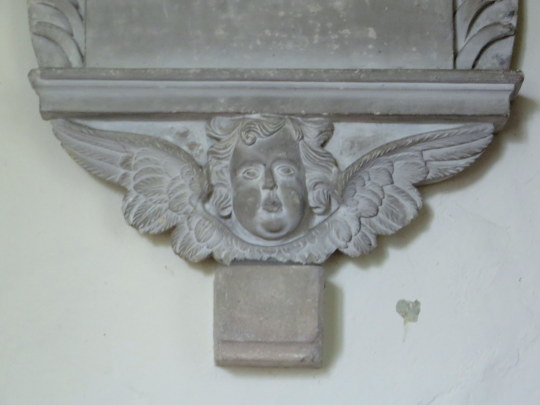
An angel blows the wind at the base of a wall plaque.
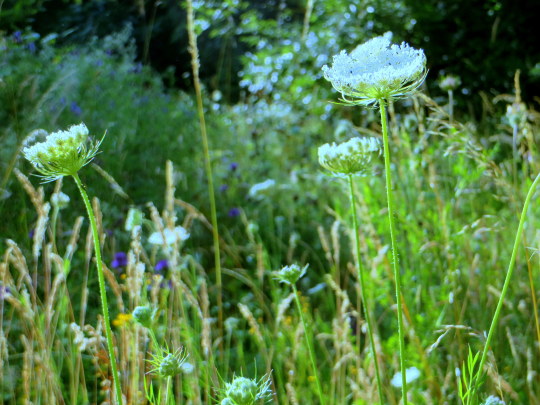
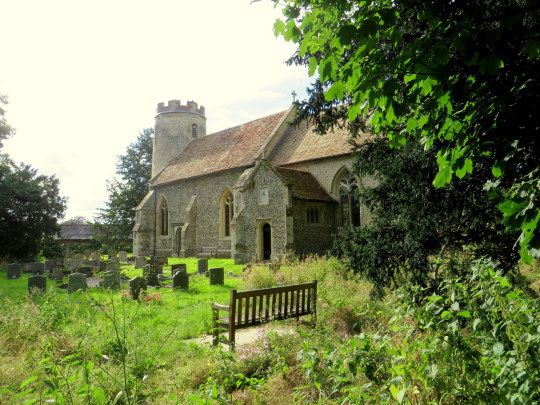
To the rear of the church is the rest of the graveyard and the way to the roman hill burials. Below is a picture of the wall sundial and the carving and wall painting from it.
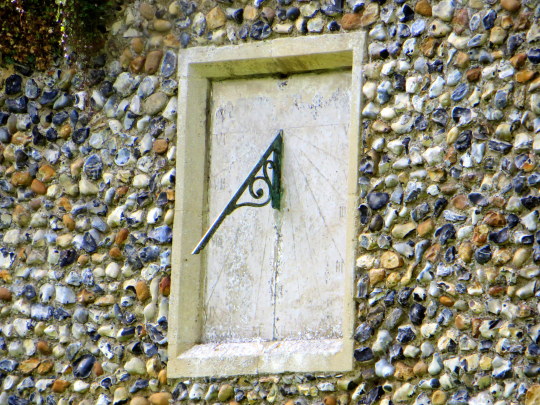
† A History of the County of Cambridge and the Isle of Ely: Volume 6.